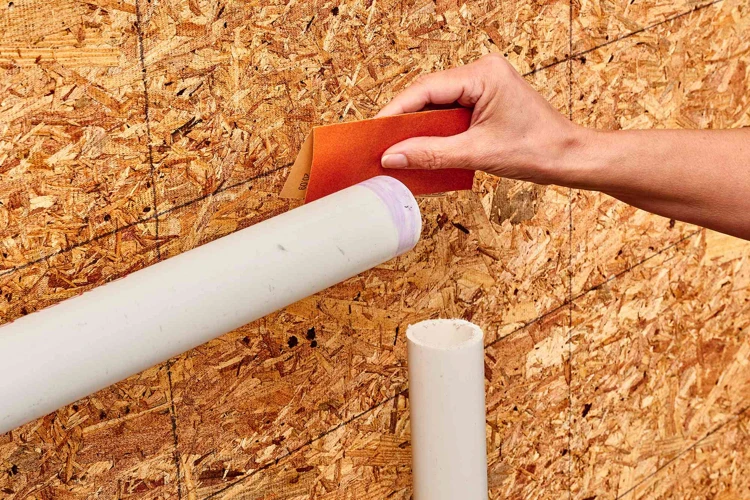When it comes to joining PVC pipes, the go-to material is PVC glue, a type of solvent cement that chemically fuses PVC pipe and fittings to create a strong, lasting bond. The process involves a chemical reaction where the solvent softens the surfaces of the PVC, enabling them to meld together into a single piece once the solvent evaporates. This process, while incredibly durable, can present challenges when alterations or repairs are necessary, making knowledge of how to melt PVC glue invaluable for both professionals and DIY enthusiasts.
Methods to Dissolve PVC Adhesive
Encountering a situation where you need to dissolve PVC adhesive may seem daunting, but with the right approach, it’s a manageable task. The key lies in understanding that while you cannot truly “melt” the glue, you can soften or dissolve the bond it has created. Two primary methods are commonly used to tackle this challenge: employing a solvent specifically designed for PVC glue and applying heat to the area.
Using a Solvent for PVC Glue
A solvent for PVC glue is specially formulated to break down the chemical bond established by the adhesive. By carefully applying the solvent to the glued joint, you can begin the process of weakening the bond. This approach requires precision and safety precautions, as solvents can be harsh and potentially dangerous if not used correctly.
Heating PVC to Unglue: What You Need to Know
Heating PVC to unglue it is another technique that can be effective. This method involves applying controlled heat to the joint area, causing the adhesive to soften to a point where the bond can be separated. However, this method must be done with caution to avoid damaging the integrity of the PVC material itself.
Step-by-Step Guide to Remove PVC Cement
The task of removing PVC cement can be painstaking, but with patience and the proper steps, it can be done successfully. Here’s how:
Preparation and Safety Measures
- Wear appropriate safety gear, including gloves and eye protection.
- Ensure proper ventilation in the work area.
- Gather materials: solvent or heat source, utility knife, and clean cloths.
Softening PVC Glue for Removal
Begin by carefully applying the solvent or heat to the glued area. If using a solvent, apply it with a brush and wait for the adhesive to soften. For heat application, use a heat gun or a hairdryer, evenly distributing the heat and gently prying the joint apart once the adhesive becomes pliable.
PVC Glue Melting Temperature: How Hot Should You Go?
The term ‘PVC glue melting temperature’ can be misleading, as the objective is not to melt the glue but to soften it. PVC begins to soften around 140°F (60°C), but temperatures should be kept as low as possible to avoid deforming the pipes. Careful application of heat is crucial, as excessive heat can compromise the PVC’s structural integrity.
DIY PVC Project Tips for Avoiding Excess Glue
Prevention is always better than a cure when working on a DIY PVC project. Here are some tips to avoid excess glue:
- Use just enough adhesive to cover the joint without over-applying.
- Practice proper joint alignment before applying the glue to ensure a clean fit.
- Clean up any spills immediately before the glue sets.
PVC Joint Disassembly Without Damaging Pipes
Disassembling a PVC joint without causing damage to the pipes requires a delicate touch and patience. Begin by identifying the type of joint and the extent of the adhesive bond. If possible, cut away any excess glue from the outside of the joint with a utility knife before attempting to soften and separate the pieces.
Alternatives to Melting PVC Glue
While softening the adhesive is a common approach, there are alternatives to consider for PVC pipe glue removal.
Using Mechanical Methods to Remove Glue
Mechanical methods, such as cutting or grinding away the glue, can be effective. These methods do not involve softening the adhesive but instead focus on physically removing it. This can be a good option when chemical solvents are not available or when heat application is not feasible.
When working on DIY projects or repairs, you might encounter different types of adhesive challenges, such as melting PVC glue. While our article on how to melt PVC glue provides a detailed guide on this specific process, you may also be interested in exploring other related topics. For instance, if you’re looking to work with other materials, our tutorials on how to dissolve PVA glue could be incredibly helpful. Additionally, if you’re struggling with PVC adhesives, understanding how to break PVC glue could be just what you need. And in case you need to correct or redo a connection, our step-by-step guide on how to re-glue PVC pipe can assist you in achieving a secure fit. Whatever your project, we have the resources to help you through.
Chemical Solutions for PVC Pipe Glue Removal
Aside from solvents specifically designed for PVC glue, other chemical solutions can aid in the removal process. Products like acetone or MEK (methyl ethyl ketone) can sometimes be used to weaken the bond, but they must be handled with extreme care due to their volatile nature and potential health risks.
Understanding how to tackle the removal of PVC cement is an essential skill for anyone working with PVC piping systems. With the proper knowledge and tools, you can successfully navigate the complexities of softening PVC glue, ensuring that your pipe installations and repairs are executed with precision and care.

